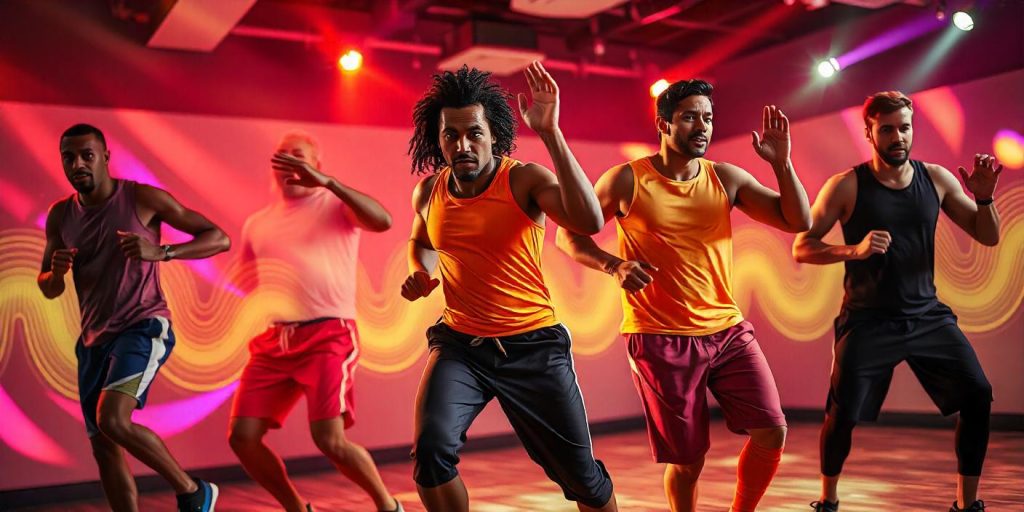Not merely a workout, Zumba is an exhilarating dance fitness program that has taken the world by storm. It was developed in the 1990s and is an incredible fusion of Latin and international dance that produces not just a cardio workout but also a fun and engaging way to stay fit. This element of entertainment—the “party” atmosphere that Zumba creates—is one of the secrets of its worldwide popularity. Millions of people now dance their way to better cardiovascular health and improved body strength and coordination.
Zumba takes the traditional exercise routine and makes it into something more enjoyable. In fact, Zumba is effectively a dance party you can attend with the mere excuse of seeking fit and healthy bodies. It is more about the atmosphere than the actual steps—with invigorating music, moving choreography, and crazy fun instructors—and beginners, among whom I count myself, hopefully won’t embarrass themselves with the audience of fit shrine zumbas that permeate Catonsville, Maryland.
What Makes Zumba Unique and Popular?
The universal appeal and age span of the individuals it serves, from all of the fitness levels, make it charming. Unlike a structured gym workout, it offers the kind of flexibility that allows the participant to bask in the glow of movement and adapt to his or her own ability. And if you think you have two left feet, fear not—it has easy choreography that even a beginner can follow without feeling intimidated.
What sets the program apart and makes it unique is its focus on music. Unlike many other workout programs where the instructor counts out the reps or gives other rhythmic commands, Zumba classes are led by a Zumba instructor who mixes and matches different types of music. A Zumba class might feature salsa, then reggaeton, followed by merengue, and then hip-hop. That combination is representative of what Zumba classes are like. The tunes that fill the room might just as easily consist of country music or rock.
Zumba is a gathering of participants cheering each other on and creating a sense of community. This is one reason why the exercise retains such popularity. Indeed, the environment within a Zumba class can be as electrifying as any group fitness class. But there’s a reason we don’t call it “camaraderie and connection fitness.” Zumba is a damn good workout, and your author feels the need to push and possibly even to excel through the push she gets from others, as well as through the motivation of some electric steps.
Physical Benefits of Zumba for Total Fitness
This workout engages numerous muscle groups at once and offers a complete fitness solution. It combines cardio, strength, flexibility, and balance. The movements are so energetic and full-bodied that they take your breath away and elevate your heart rates. Cardio workouts promote heart health; improve endurance and stamina; and aid in weight management, including burning calories.
Every Zumba session for this class combines both fast and slow rhythms. This is beneficial because the mix lets you target different muscle groups, including some that you might not realize you’re using when you do the dance steps. The movements in Zumba work the core, legs, and glutes for sure. But they also work your arms, and the shoulder and arm toning that’s part of the class has really helped me improve my upper body strength.
Apart from physical power, Zumba improves coordination and balance. The movement and dance required mandates dancers to be both focused and precise, and in this their cognitive abilities are sharpened, making one more “zumbalicious,” as the saying goes. At the same time, participants are also requiring themselves to perform motor skills more and better, hence giving the routine a sort of two-for-one (or two-for-better) deal.
Mental Health Benefits of Zumba
Not only does it have physical benefits, but it also offers substantial mental health payoffs, aligning it even further with the holistic health model. Any form of exercise leads to the release of endorphins, those feel-good hormones that elevate your mood and lower your stress level. Zumba amplifies this effect by combining loud, upbeat music with simple yet almost euphoric rhythmic movements that form the dance.
Being involved in these classes offers an outstanding way to express oneself. The dance steps allow for individual creativity and for channeling one’s feelings into the movements. This kind of dance lets everyone perform as an artist and makes anyone feel liberated from everyday life. A few years ago, a study linked contemporary dance classes to improved self-esteem.
In addition, the group configuration nurtures a supportive atmosphere and alleviates the sense of aloneness and solitude. The collective experience of rhythm, motion, and even perspiration in Zumba creates a camaraderie that spills over from the studio into everyday life. For a lot of people, Zumba is no longer just a workout but also a with-it means to achieve not only fitness but also forms of community and identity.
Zumba for Weight Loss and Energy Boost
What makes it an effective weight-loss tool is the dynamic routines. Depending on the intensity and duration of the session, participants can burn anywhere from 500 to 1,000 calories per hour. This level of calorie expenditure rivals more traditional forms of cardio, such as running or cycling.
One of the greatest appeals lies in the ability to make exercise enjoyable. The lively music and diverse dance moves distract participants from the physical exertion, allowing them to push themselves harder without realizing it. This “fun factor” keeps individuals motivated and is a principal reason Zumba has such a dedicated following. With Zumba, one is more likely to work out consistently and to remain committed over the long haul.
Zumba not only aids in weight loss but also enhances energy levels. Its heart-pumping, calorie-burning routines enhance cardiovascular fitness and improve oxygen distribution in the body, leading to increased stamina and a sense of overall well-being that permeates daily life.
How to Get Started with Zumba
Beginning Zumba requires little more than discovering a class nearby or conveniently partaking in online sessions from your home. Countless fitness studios and gyms proffer Zumba classes of varying levels, and no two instructors are alike in their presentation and delivery. The best vibe for Zumba is an instructor who resonates with your energy and style, be it with spoken cues, hands-on corrections, or unflagging enthusiasm.
It is crucial for individuals who are not well acquainted with Zumba to don attire that is comfortable and conducive to a high degree of movement. Likewise, the footwear should be supportive yet allow for “dance” steps that feel free and easy—despite the amount of energy that may be exerted during the making of them. One must also consider that the routines, as a whole, are physically demanding. Therefore, it is equally important to maintain hydration and other levels of personal well-be犀利士 ing. Finally, it’s crucial to reiterate that beginners should solely focus on enjoying the experience and feeling confident while participating. We don’t expect anyone to “nail” Zumba moves in the same way one might strive to “nail” a ballet step.
To gain the rewards of Zumba, being consistent is key. Join classes two to three times a week to reap the utmost benefits. Feel free to explore different Zumba class formats, such as Aqua Zumba or Zumba Toning, for added variety and intensity.

